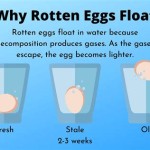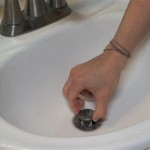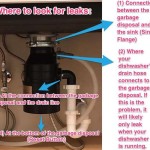Why Is My Kitchen Sink Clogged?
A clogged kitchen sink is a common household problem, often disrupting daily routines and causing considerable inconvenience. Understanding the underlying causes of these blockages is crucial for effective prevention and resolution. This article explores the typical culprits behind kitchen sink clogs, offering insights into their formation and potential remedies.
Grease and Food Particles: The Primary Offenders
The accumulation of grease and food particles constitutes the most frequent reason for kitchen sink clogs. While seemingly innocuous when poured down the drain, both substances can solidify and adhere to the interior walls of the pipes, leading to gradual narrowing of the waterway. This narrowing eventually restricts water flow, culminating in a complete blockage.
Grease, typically derived from cooking oils, fats, and butter, cools and congeals as it moves through the plumbing system. This solidified grease sticks to pipe surfaces, creating a sticky residue that readily traps other debris. Over time, this buildup hardens, effectively reducing the pipe's diameter and hindering water drainage.
Food particles, including coffee grounds, eggshells, pasta, and rice, contribute to the problem. These materials often fail to break down adequately in water and can accumulate in the drain trap or further down the drainpipe. Their irregular shapes and textures allow them to easily become entangled with grease and other debris, accelerating the formation of a solid clog.
Preventing grease and food particle accumulation requires mindful disposal practices. Instead of pouring grease down the drain, it should be collected in a container and discarded with solid waste. Similarly, food scraps should be scraped into the trash or compost bin before washing dishes. Using a sink strainer can effectively capture larger food particles and prevent them from entering the drainpipe.
Regular flushing of the drain with hot water can help prevent the buildup of grease. Pouring a kettle of boiling water down the drain once a week can assist in melting away accumulated grease before it solidifies. However, it’s important to check the composition of your pipes before using this method, as some older PVC pipes might be damaged due to the extreme heat.
Soap Scum and Mineral Buildup
Beyond grease and food, soap scum and mineral deposits also significantly contribute to drain clogs. Soap scum, a byproduct of the reaction between soap and hard water minerals, can accumulate within pipes, creating a sticky film that traps debris and reduces water flow. Mineral buildup, particularly in areas with hard water, can further constrict the pipe's diameter.
The type of soap used can impact the degree of soap scum formation. Bar soaps, often containing tallow or other animal fats, tend to produce more soap scum compared to liquid detergents. Switching to liquid detergents or using water softeners can help mitigate the problem.
Hard water contains high concentrations of minerals like calcium and magnesium. These minerals can precipitate out of the water and form deposits on the interior walls of pipes, leading to mineral buildup. Over time, this buildup can significantly reduce the pipe's capacity and contribute to clogs. The use of water softeners can effectively remove these minerals from the water supply, reducing the likelihood of mineral buildup in the plumbing system.
Periodic flushing of the drain with a mixture of baking soda and vinegar can help dissolve soap scum and mineral deposits. Pouring one cup of baking soda down the drain, followed by one cup of vinegar, and allowing the mixture to fizz for 30 minutes before flushing with hot water can help break down these deposits. This method should be used with caution, as the reaction can generate pressure in the drainpipe, potentially causing leaks in older or damaged plumbing systems.
Foreign Objects and Accidental Disposals
Accidental disposal of foreign objects down the drain can lead to immediate and severe clogs. Items such as small toys, utensils, sponges, and dental floss can become lodged in the drainpipe, obstructing water flow and requiring immediate attention.
The presence of a garbage disposal unit can inadvertently increase the risk of clogs if improperly used. While garbage disposals are designed to grind food waste, they are not intended to process all types of materials. Disposing of fibrous foods like celery stalks, corn husks, and banana peels can overwhelm the disposal unit and lead to clogs.
Similarly, starchy foods like potatoes and pasta can create a sticky paste that adheres to the blades and drainpipes, hindering the disposal's functionality and causing clogs. Greasy foods can also contribute to the problem, as the grease can solidify within the disposal unit and drainpipe.
To prevent clogs caused by foreign objects and misuse of the garbage disposal, it is essential to be mindful of what goes down the drain. Smaller objects should be kept away from the drain opening. When using the garbage disposal, ensure to run cold water while grinding food waste and continue running water for several seconds after the disposal is turned off to flush everything down the drainpipe. Avoid disposing of fibrous, starchy, and greasy foods in the garbage disposal.
If a foreign object is suspected to be the cause of the clog, attempting to retrieve it with a pair of long-nosed pliers or a similar tool can be helpful. However, if the object is lodged deep within the drainpipe or inaccessible, contacting a professional plumber is recommended to avoid further damage to the plumbing system.
In addition to the factors mentioned above, the design and age of the plumbing system can also influence the likelihood of clogs. Older plumbing systems may have narrower pipes and rougher interior surfaces, making them more prone to clogs. Similarly, pipes with sharp bends or inadequate slope can impede water flow and increase the risk of blockages.
Regular maintenance and preventative measures are crucial for maintaining a clog-free kitchen sink. This includes avoiding the disposal of grease and food particles down the drain, flushing the drain with hot water regularly, and being mindful of the items that go into the garbage disposal. By understanding the causes of kitchen sink clogs and adopting preventative measures, homeowners can minimize the occurrence of these frustrating plumbing problems.
Addressing minor clogs promptly can prevent them from escalating into more significant problems. Using a plunger to dislodge the clog or using a drain snake to break up the blockage can often resolve minor clogs. However, for persistent or severe clogs, seeking the assistance of a professional plumber is essential.
Professional plumbers have the expertise and equipment necessary to diagnose and resolve complex drain clogs effectively. They can identify the root cause of the problem, whether it is a buildup of grease, a foreign object obstruction, or a more serious plumbing issue, and implement appropriate solutions. These solutions may include hydro-jetting, a process that uses high-pressure water to clear out debris and buildup from the drainpipes, or even pipe replacement in cases of extensive damage or deterioration.
Ultimately, maintaining a functional and clog-free kitchen sink requires a combination of preventative measures, prompt attention to minor clogs, and professional assistance when necessary. By understanding the factors that contribute to sink clogs and taking proactive steps to mitigate these risks, homeowners can ensure the smooth operation of their kitchen plumbing system and avoid the inconvenience of a clogged sink.

How To Unclog A Kitchen Sink Drain

How To Unclog A Kitchen Sink Youtube

How To Unclog A Kitchen Sink Drain
.webp?strip=all)
Why Does My Kitchen Sink Keep Clogging Causes Easy Fixes

Why Is My Double Kitchen Sink Backing Up To The Other Side Flohawks Plumbing Septic

How To Unclog A Kitchen Sink Drain

How To Unclog A Kitchen Sink That Is Full Of Water

Slow Sink Drain Kitchen Not The Trap

5 Reasons Why There S Water Backing Up In The Kitchen Sink Marco Plumbing Durham Greater Toronto

5 Things To Do Unclog Your Kitchen Sink Ivey Engineering







